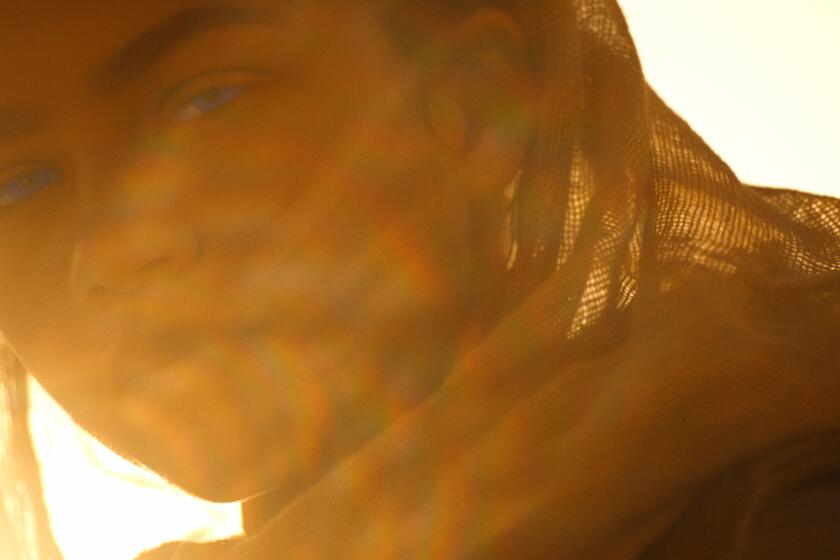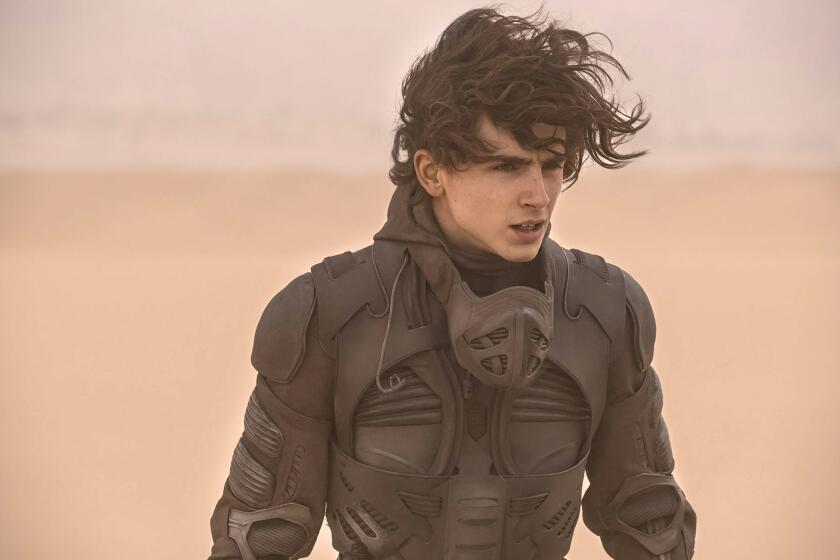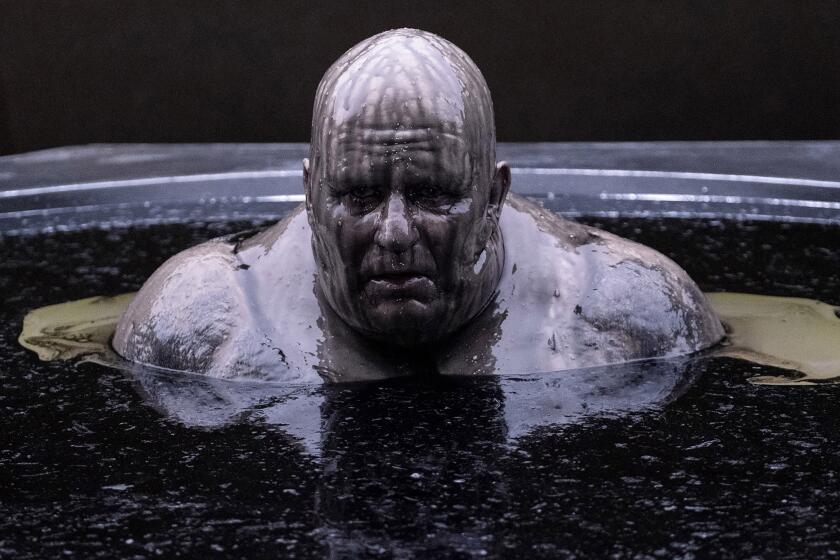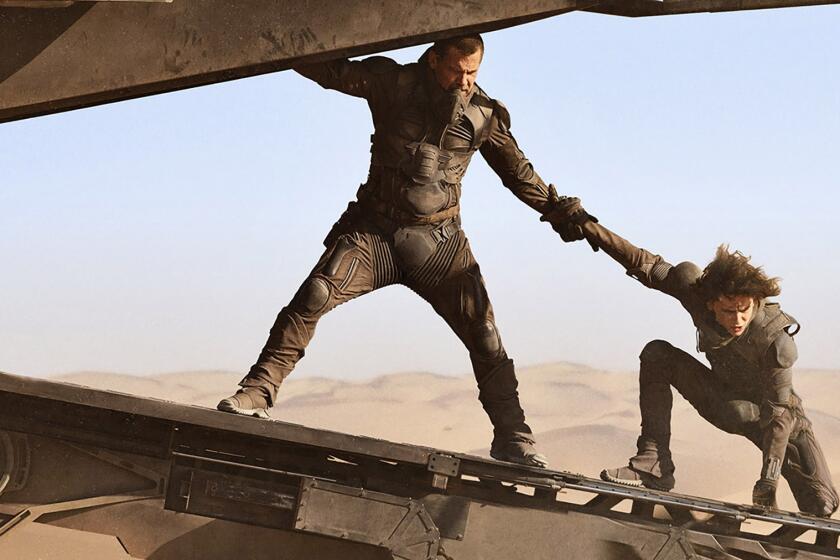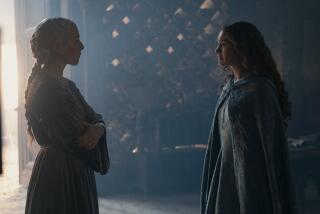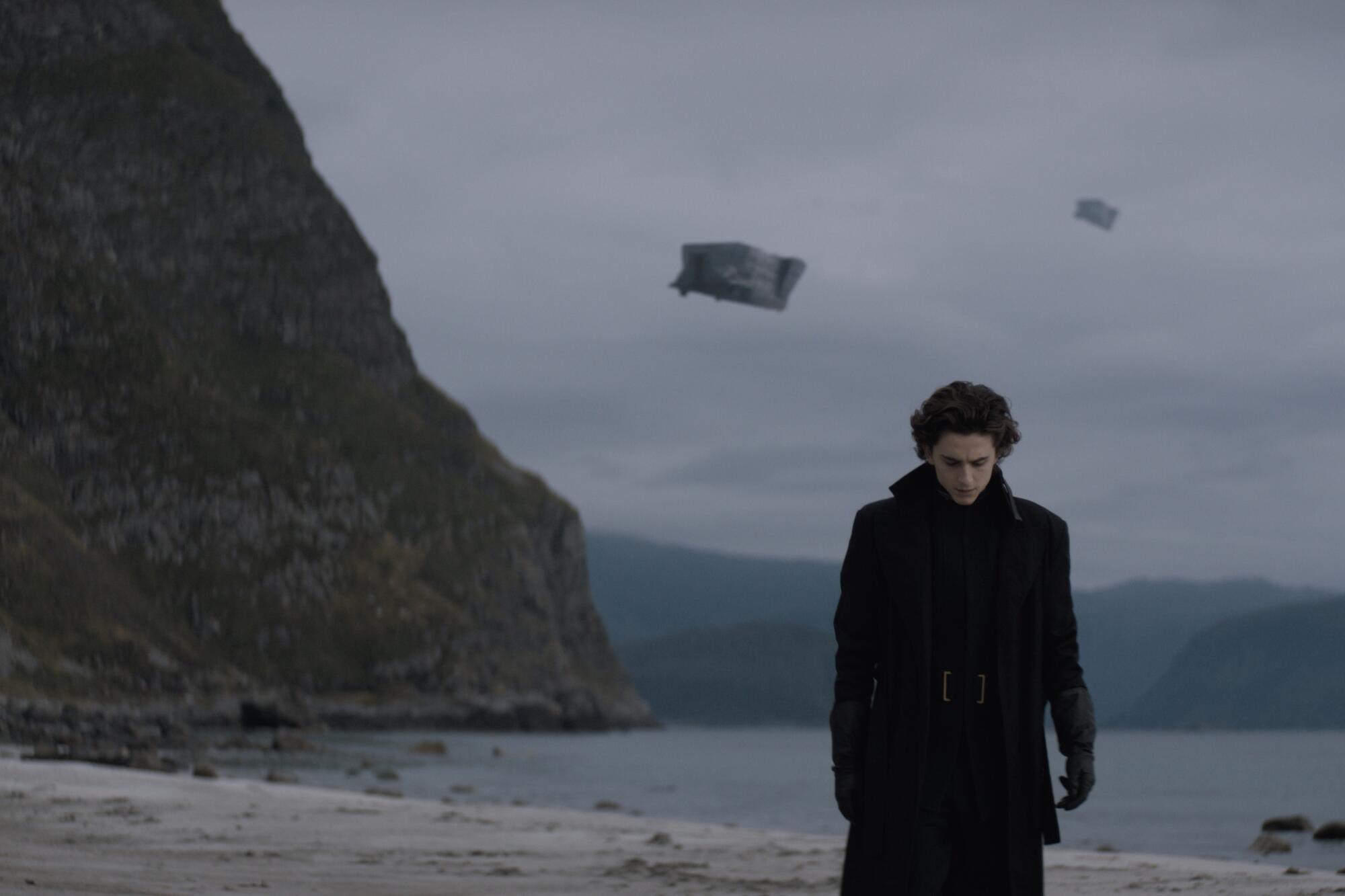
Denis Villeneuve first read Frank Herbert’s classic 1965 sci-fi novel “Dune” when he was around 13, and for an impressionable future filmmaker growing up in Quebec, Canada, the book was like an oasis in the desert.
“I became obsessed with it,” Villeneuve says. “‘Dune’ merged with the birth of my love of cinema. It became a book that stayed with me through the years and that I kept beside me.”
So when he set about to tackle the dense, philosophical and supposedly unadaptable book, Villeneuve was determined to stay as faithful as he could to Herbert’s vision. “My goal was really to make sure that the hardcore fans will find the atmosphere and poetry of the book intact,” he says of the highly anticipated $165-million production, which arrives today in theaters and on HBO Max.
That’s not to say, though, that Villeneuve and his co-writers, Eric Roth and Jon Spaihts, didn’t make some changes in translating the nearly 60-year-old novel — which chronicles the battle for dominion of the desert planet of Arrakis and the rise of reluctant messianic figure Paul Atreides (Timothée Chalamet) — for a modern moviegoing audience.
The new film “Dune” ends on a cliffhanger. With the second half of Frank Herbert’s classic story still to tell — not to mention all its sequels and prequels — where will the “Dune” universe go from here?
Many of the alternations and omissions were fairly minor. (Sorry, “Dune” nerds — Josh Brolin’s troubadour-soldier Gurney Halleck doesn’t sing any ballads in this movie.) Others were more significant.
Here, Villeneuve discusses five of the film’s biggest deviations from Herbert’s novel.
(Warning: plot spoilers ahead for both the original book and new film version of “Dune.” If you’re not familiar with the material, read our review or this feature on the movie’s development first and then come back.)
Less intergalactic politics, more emotional drama
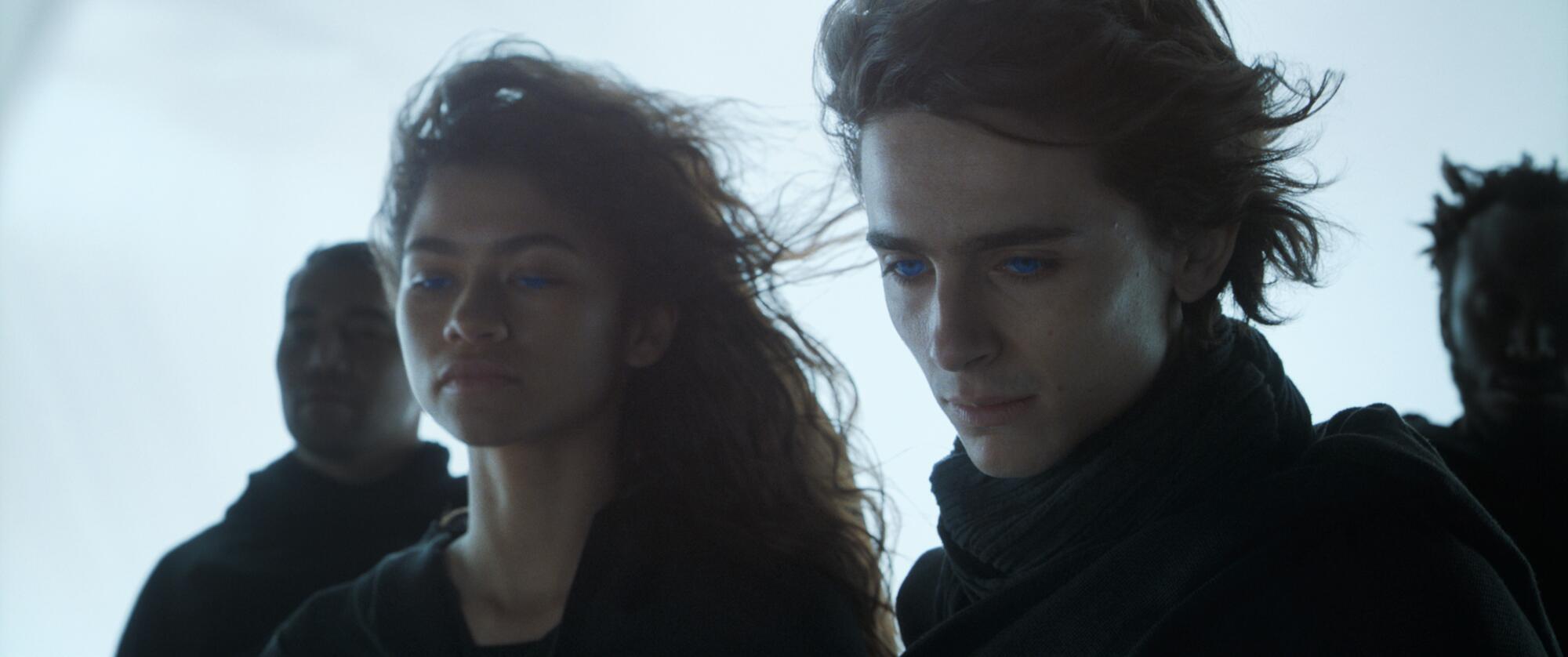
One could very easily get lost in the thicket of names of various political and economic entities, religious orders and galactic organizations referred to throughout Herbert’s novel: the Spacing Guild, the Landsraad, various noble houses (major and minor), the High Council, the Imperium, the Bene Gesserit, the CHOAM company, the Missionaria Protectiva. And that’s before you even get to the numerous sequels and prequels written by Herbert and later by his son Brian and Kevin J. Anderson that further expand the saga.
While Villeneueve wanted to preserve the novel’s vast scope and its exploration of the ways power can be used and abused, he knew that a Hollywood production on the scale of “Dune” needed to be comprehensible to newbies without requiring supplementary homework or endless exposition. While still conveying the broad strokes of the various power players and warring clans, he opted to leave out some of the intricacies of the wider intergalactic landscape in favor of a more focused and viscerally emotional story.
”The storyline is pretty simple — it’s more the density of the world and how rich and complex it is,” Villeneuve says. “The big challenge was to try not to crush the audience at the start with an insane amount of exposition. It took a long time to find the right equilibrium so that people who don’t know ‘Dune’ will not feel left aside and will feel part of the story.”
Ultimately, Villeneuve’s goal was to boil the story down to universal things that didn’t require a PhD in “Dune”-ology to understand — the sort of coming-of-age emotional turbulence and family dynamics that he sparked to upon first encountering the book as a teenager. “I really connected with Paul’s melancholia, his feeling of isolation, his fear about what was about to happen,” he says. “He was a big dreamer, and there were a lot of elements like that I could relate to.”
Skipping the internal monologues and narration
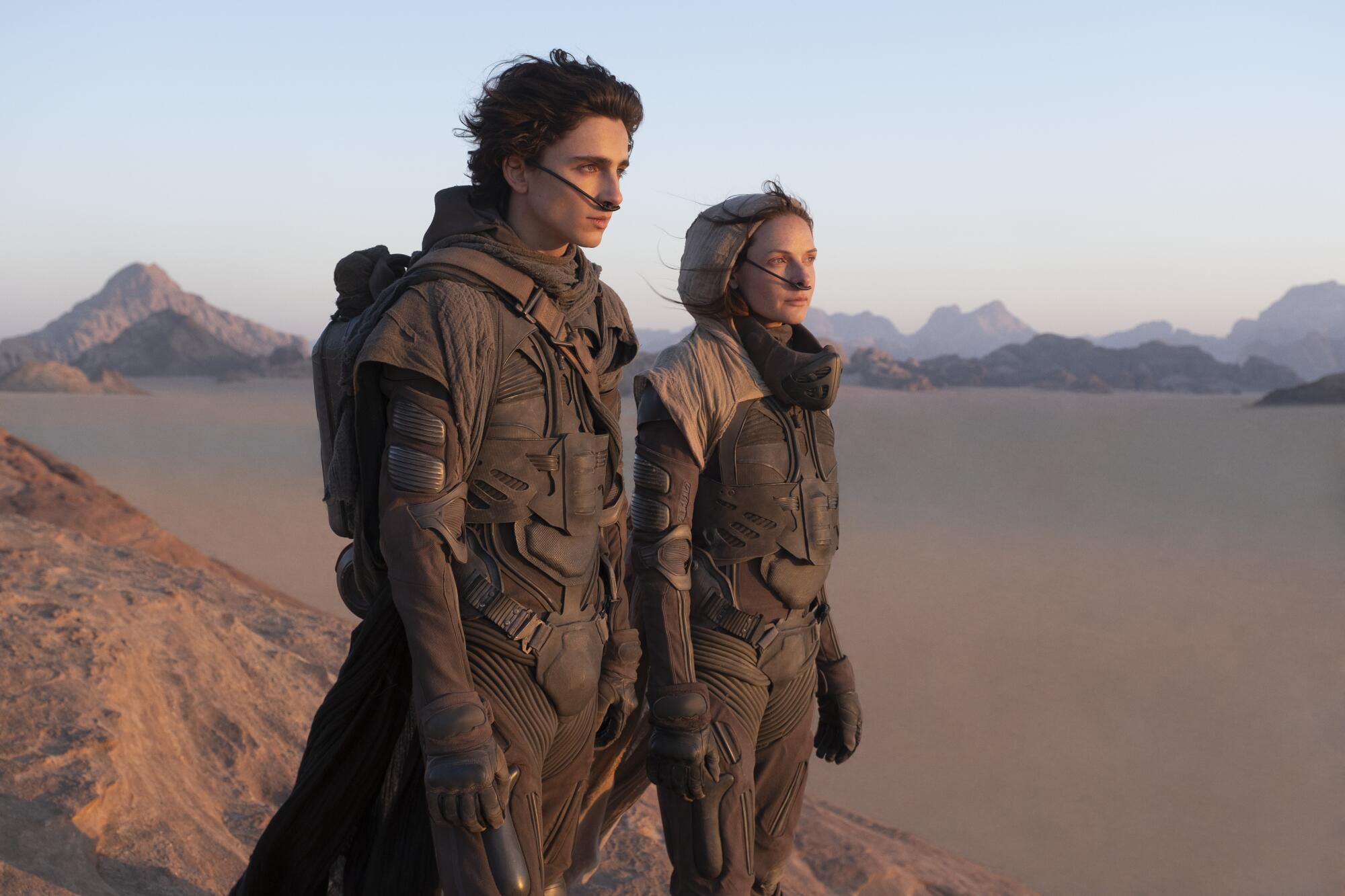
Herbert’s novel is dense with italicized inner monologues, as characters continually muse about their hopes and fears and consider their secret plans. “I must do away with that one soon. He has almost outlived his usefulness,” the villainous Baron thinks about his mentat advisor Piter De Vries early on, in just one of countless examples.
But while that approach may work on the page, the visual medium of film is an entirely different animal. David Lynch’s ill-fated 1984 adaptation of “Dune” attempted to replicate Herbert’s inner monologues through the extensive use of voice-overs to a degree that at times lapsed into self-parody.
Villeneuve wanted to take a more purely cinematic approach, trusting that audiences could glean the characters’ motivations through nuances of performance, music and moody imagery without having them spelled out in awkwardly whispered voice-overs. In an innovation not found in Herbert’s book, Villeneuve gave Jessica and Paul a system of secret hand signals so they could share their thoughts without words.
Heralded as the best sci-fi novel of all time, previous adaptations of Frank Herbert’s ‘Dune’ have fizzled. Now it’s Denis Villeneuve’s turn.
“The book is very internal,” Villeneuve says. “We are hearing the thought processes of different characters. The way we adapted this is first of all we embraced Paul and Jessica’s point of view and tried to stay as close as possible to those two characters. Then we tried to develop ideas that would allow us to feel what their mind-set is without having a voice-over.”
Villeneuve also dispensed with the epigraphs, extracted from the writings of the fictional Princess Irulan, daughter of the Padishah Emperor, that Herbert placed at the beginning of each chapter of the novel to provide further context and commentary for the story. In Lynch’s film, the princess (played by Virginia Madsen) served as a narrator, but the character does not figure in Villeneuve’s film at all, though she could pop up in the sequel.
The movie does, however, preserve the novel’s most famous inner monologue: the so-called litany against fear that Paul uses to focus his mind when he is tested with a pain-inducing box by the Bene Geserit Reverend Mother. Some hardcore “Dune” fans have the words of the litany — which begins, “I shall not fear / Fear is the mind-killer” — tattooed on their very flesh. So leaving them out of any adaptation of “Dune” would be unthinkable.
Streamlining storylines
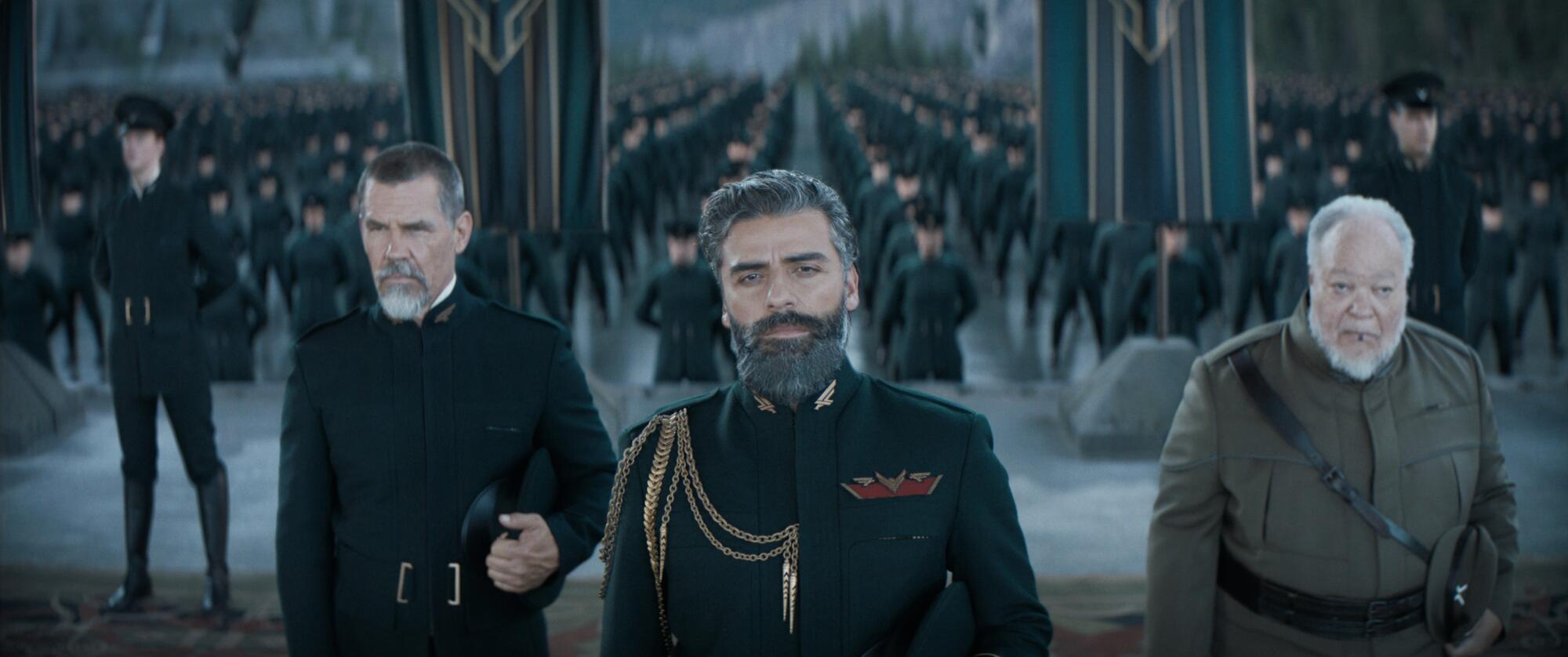
Herbert’s sprawling novel brims with subplots and side characters, presenting a major challenge to anyone trying to distill the narrative down to even two films, let alone one. To trim the story to a more manageable size, Villeneuve and his co-writers took a scalpel — or, in some cases, a more blunt instrument — to Herbert’s book, excising certain characters, such as the Baron’s scheming nephew Feyd-Rautha (memorably played by Sting in Lynch’s version), and moving others to the margins.
The book’s two key “mentat” characters, for example — Thufir Hawat and Piter De Vries, played by Stephen McKinley Henderson and David Dastmalchian, respectively — are significantly less prominent in the film than in the novel. Indeed, the word “mentat” — referring to a specially trained being who is a kind of cognitively supercharged human calculator — is never actually spoken. And a plot line in the novel in which Hawat wrongly suspects Jessica of betraying the Duke does not factor in the movie, though it could potentially surface in the planned sequel.
“There are some characters that are less developed that I’m keeping for the second film — that’s the way I found the equilibrium,” Villeneuve says. “We tried in this movie to stay as close as possible to Paul’s experience. Then, in the second one, I will have time to develop some characters that were left aside a little bit. That’s the theory. I hope it will work.”
Scaling back the Baron and his court
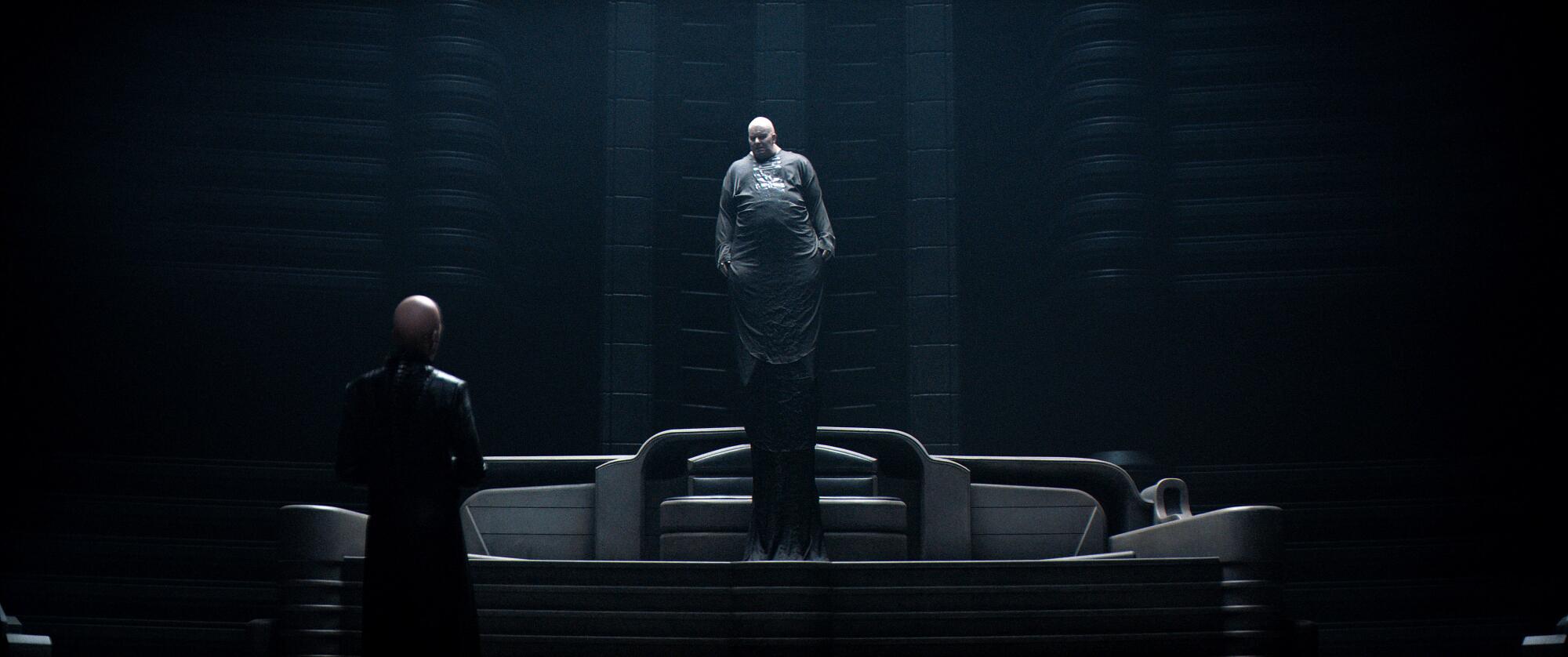
When Stellan Skarsgård first read the script for Villeneuve’s “Dune,” he was surprised how little dialogue his character, Baron Vladimir Harkonnen, had in the film. As the main villain in a sci-fi epic, he assumed the Baron would do a certain amount of bad-guy speechifying. “My first reaction was, ‘This is not much,’ ” the actor says.
In Herbert’s novel, the Baron is rarely at a loss for words, as he schemes to destroy his mortal enemies in House Atreides. But in Villeneuve’s mind, the character was far more frightening if he kept his cards close to his vest, conveying his menace primarily in nonverbal ways. “I cut out most of the speech of the Baron,” Villeneuve says. “I wanted him to be a man of few words.”
Bringing iconic sci-fi villains to the screen in director Denis Villeneuve’s ‘Dune’ was a massive special effects undertaking for every department.
Villeneueve’s film also skips over much of the palace intrigue and infighting that Herbert details in the Harkonnen court and steers clear of Herbert’s suggestion in the novel that the Baron is a pederast who sexually preys on young slave boys. “I just felt that this was an idea that was a bit clichéd and didn’t age very well,” the director says.
For fans who might feel that the Harkonnens got short shrift, the director promises we’ll see significantly more of them in the yet-to-be-officially-greenlighted sequel. “This movie is really focused on Paul and I brought, in a little bit of the Harkonnens just for context, to understand the geopolitics of the story,” he says. “This movie just gives a little glimpse into the Harkonnens. The second movie is much more about them.”
Amplifying the feminine
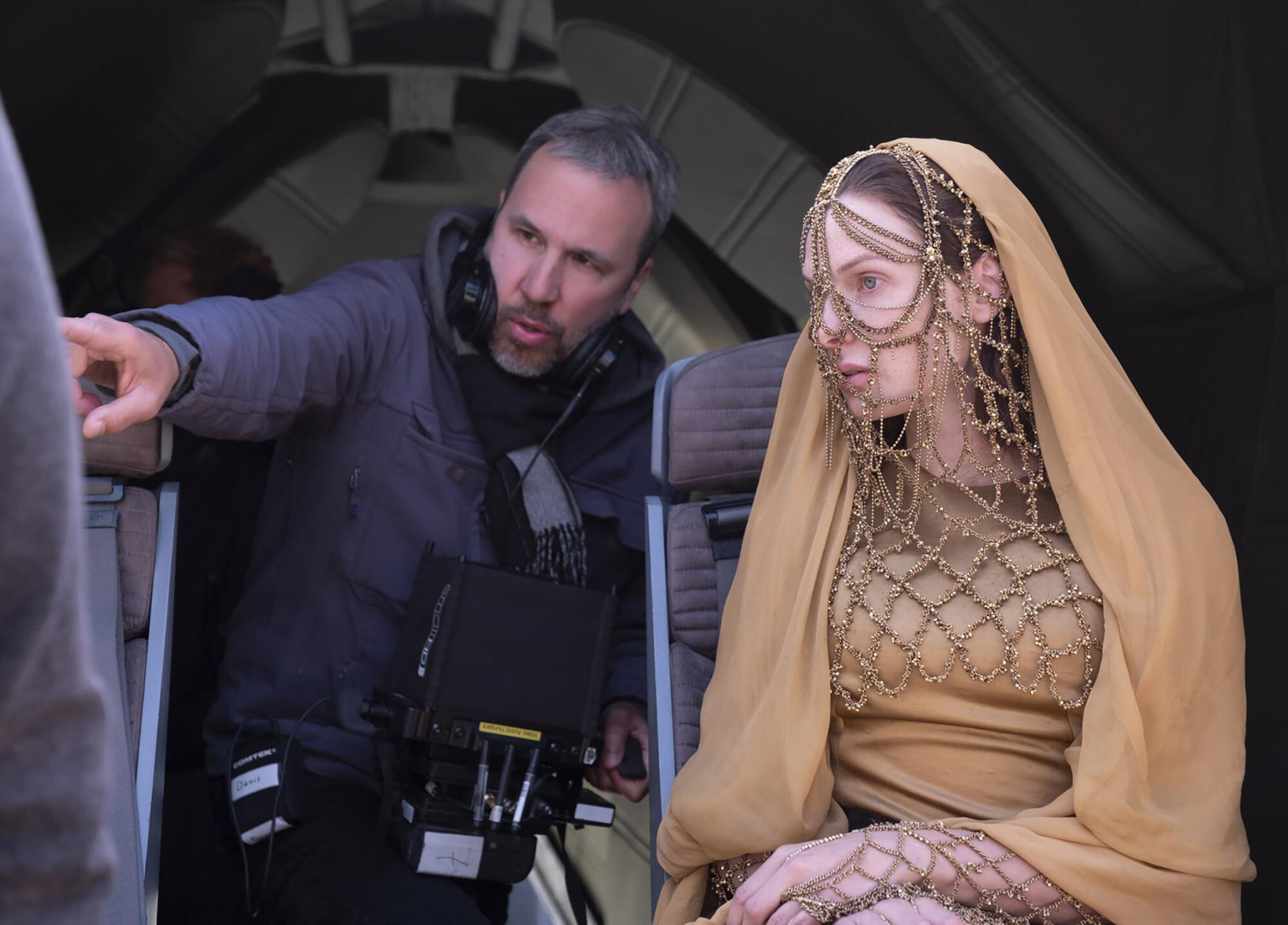
While Villeneuve pulled back on the Harkonnens, he was intent on pushing forward the book’s main female characters: Paul’s mother, Lady Jessica (Rebecca Ferguson), the young Fremen warrior Chani (Zendaya) and the members of the Bene Gesserit religious sisterhood (including the reverend mother played by Charlotte Rampling).
“As a filmmaker, I’ve always been attracted by femininity, and in a lot of my movies the main protagonist is female,” he says. “Femininity is there in the book, but I thought it should be up front. I said to Eric and Jon, ‘We need to make sure that Lady Jessica is not an expensive extra.’ She’s such a beautiful and complex character.”
As played by Ferguson, Jessica has a fierceness and a fighting prowess, along with her Bene Gesserit mental abilities, not always evident in the novel. And while Chani does not appear in the first half of Herbert’s book, Villeneuve shifted her into the film through Paul’s visions of the future.
In one of the most significant alterations from Herbert’s book, the film changes the gender of the character of Liet Kynes, a planetologist with a deep love for Arrakis and the Fremen, from male to female. While Max Von Sydow portrayed the character in Lynch’s film, here Kynes is played by British actress Sharon Duncan-Brewster.
When Spaihts suggested the change during the film’s development, Villeneuve immediately jumped at the idea. “I said, ‘That’s brilliant,’ ” he says. “Because it doesn’t change the nature of the character. It just makes it closer to the world today and more relevant and frankly more interesting.”
Villeneuve also gave the character a far more dramatic and cinematic death than in the novel. In the book, Kynes dies alone in a natural underground eruption of gas, called a “spice blow,” after being abandoned in the desert. In the film, Kynes is stabbed by a Sardaukar soldier, then summons a sand worm to swallow up both her and her killer — a moment of big-screen visual-effects razzle dazzle accompanied by Hans Zimmer’s swelling score.
It is, after all, a movie.
Timothée Chalamet, Zendaya and Oscar Isaac headline Denis Villeneuve’s seat-rattling adaptation of the Frank Herbert sci-fi classic.
More to Read
Only good movies
Get the Indie Focus newsletter, Mark Olsen's weekly guide to the world of cinema.
You may occasionally receive promotional content from the Los Angeles Times.
